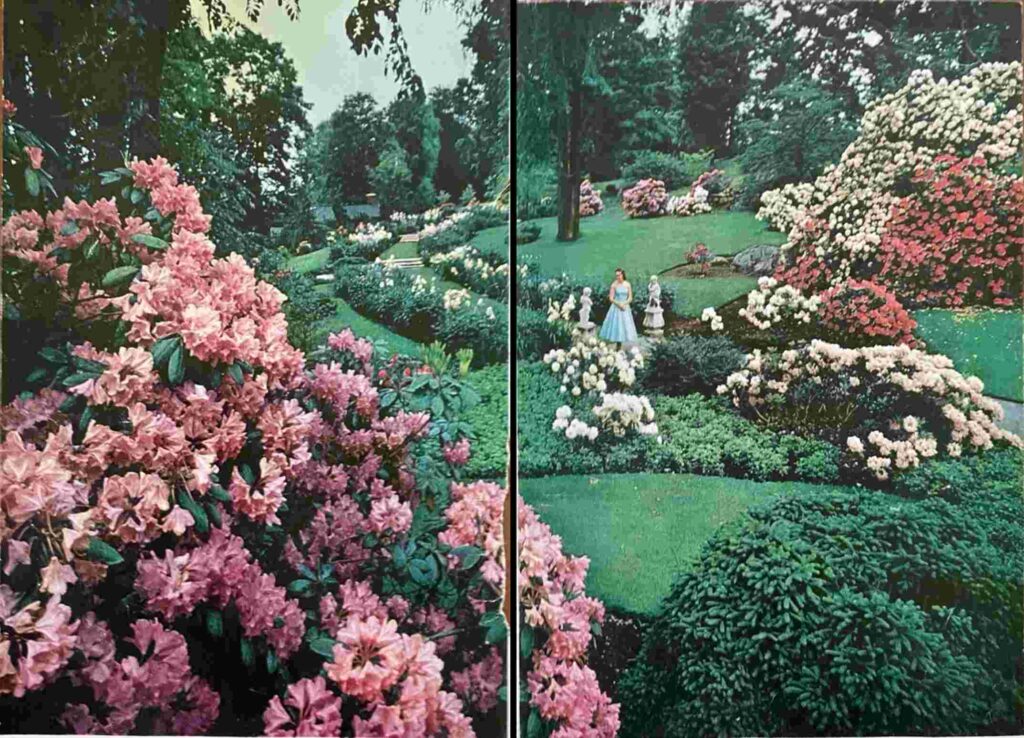
Written by Nina Olsen, Buttrick Gardens Horticultural Intern, Summer 2023.
Each area of the Buttrick Gardens has its own unique beauty. The formal Flower Garden south of the Buttrick house, now the North Bridge Visitor Center, makes a stately impression with its hedge walls and long flower beds, which are seasonally full of colorful iris, daylily, and other blooms. Further south, the Sunken Garden has similar flowers in addition to tall spires of delphiniums and foxgloves, which frame the view to the North Bridge and Concord River. To the east and above the riverbank, the East Terrace Garden offers secret paths through trees and shrubs along the slope with idyllic views of the Concord River.
The West Slope Garden lies to the west across the path that leads to North Bridge. While slightly removed from the other sections of the gardens, the West Slope is worth a visit. It has a unique curved path, exposed boulders, a hidden bench, and a collection of pollinator plantings not present in the other gardens. As a summer horticultural intern at the Buttrick Gardens, funded by the Friends of Minute Man National Park, I discovered that the West Slope Garden is an important part of the garden’s history.
The Buttrick Gardens began in 1911 by Stedman Buttrick I, when he built the house that is now the North Bridge Visitor Center. Stedman II and Carolyn Lamson (Keyes) Buttrick inherited the estate following the passing of Stedman I in 1925, and built the West Slope Garden in the 1940s. Adjacent to the West Slope garden, Stedman II and Carolyn built a greenhouse, which was the hub of their horticultural operations.
The garden beds surrounding the greenhouse were the epicenter of Stedman II and Carolyn’s iris and daylily propagation endeavors. They created many new cultivars, some of which won horticultural awards and many of which are still propagated and sold by iris and daylily collectors. In fact, when the Buttricks conveyed the property to Minute Man National Historical Park, the property appraisal included a detailed inventory of all flower cultivars and their value. Flowers in the Formal, Sunken, and Terrace Gardens all had unique names, while those in the West Slope only had assigned numbers. These numbers were associated with plant propagation. When Stedman II and Carolyn created a new flower, they would first place it in the West Slope Garden. They would name the cultivar when they deemed it marketable and then transplant it to other garden areas.
The West Slope Garden beds are currently filled with irises, daylilies, and peonies and are a work in progress. In the past few years, horticultural interns and volunteers have added pollinator species such as hyssop, bee balm, and nicotiana to invite bees, hummingbirds, and butterflies. The gardens also require continuous pruning and weeding to prevent them from disappearing into the landscape. For example, this summer we removed weeds from an abandoned garden bed and filled the bed with irises divided from other parts of the gardens. I am humbled to have played a small part in preserving the vision of the Buttrick family and preserving the gardens for present and future generations.
Figure 1 above: West Slope Garden, National Geographic Magazine, May 1959. The greenhouse roof is visible in the background. When visiting the West Slope Garden, look for the exposed boulders visible in this photograph. The rhododendrons, here pictured in bloom, are also extant.
Please scroll down to view more photos of the West Slope Gardens.
Click here to support the annual Buttrick Gardens horticultural internship.


Figure 1 and 2. View in 1959 on the left and view from 2023 on the right from a similar vantage point. Note the steps, flower beds, and boulders visible in both pictures.
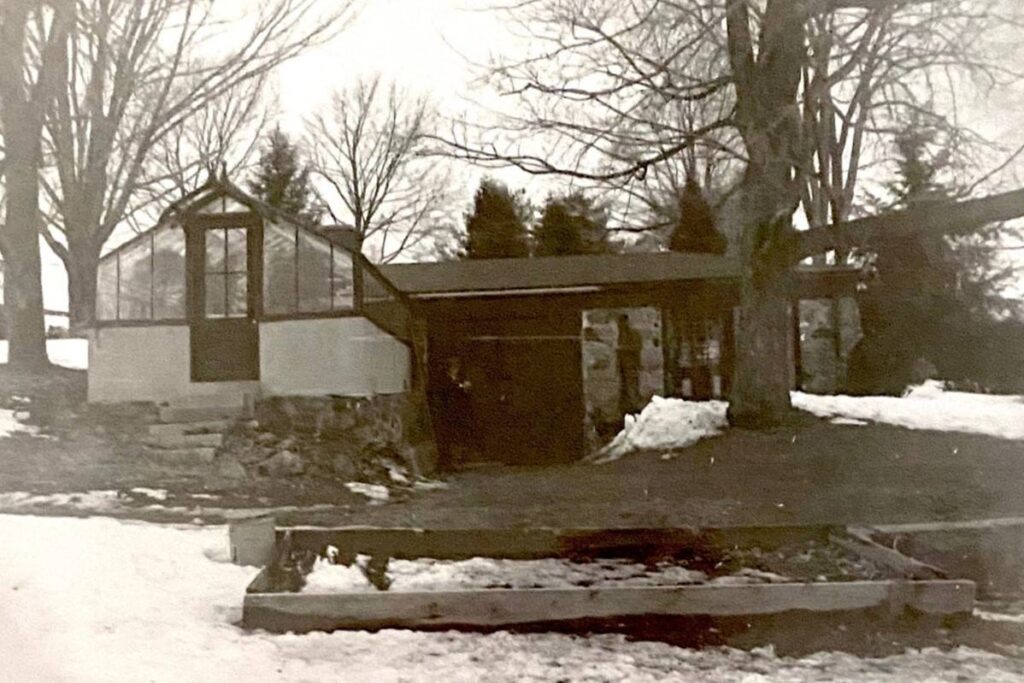
Figures 3. The greenhouse that stood in the West Slope Garden from the Buttrick Estate property appraisal, 1963. The path to the greenhouse is still present, but the building and foundation are gone.
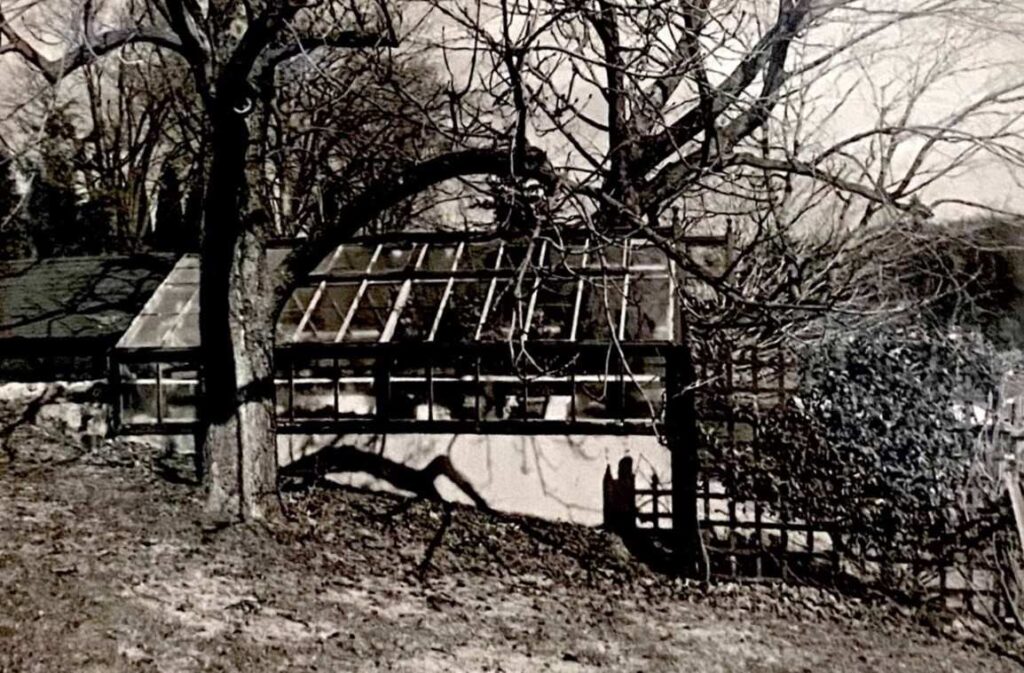
Figure 4. Side view of the greenhouse, 1963.
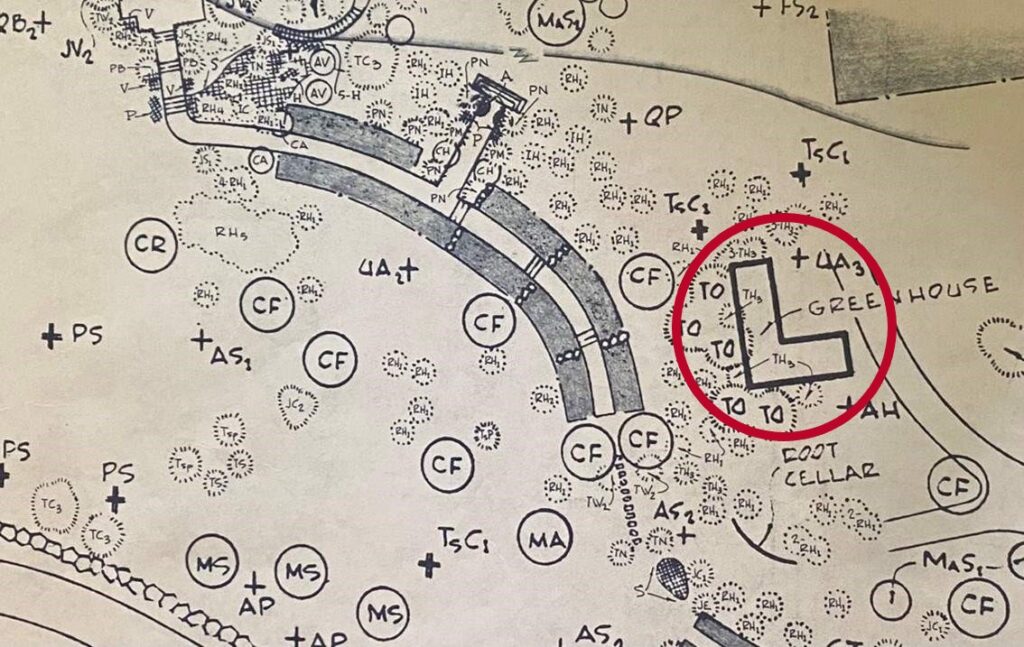
Figure 5. Map showing the L-shaped greenhouse in the West Slope Garden, circled in red, 1963.
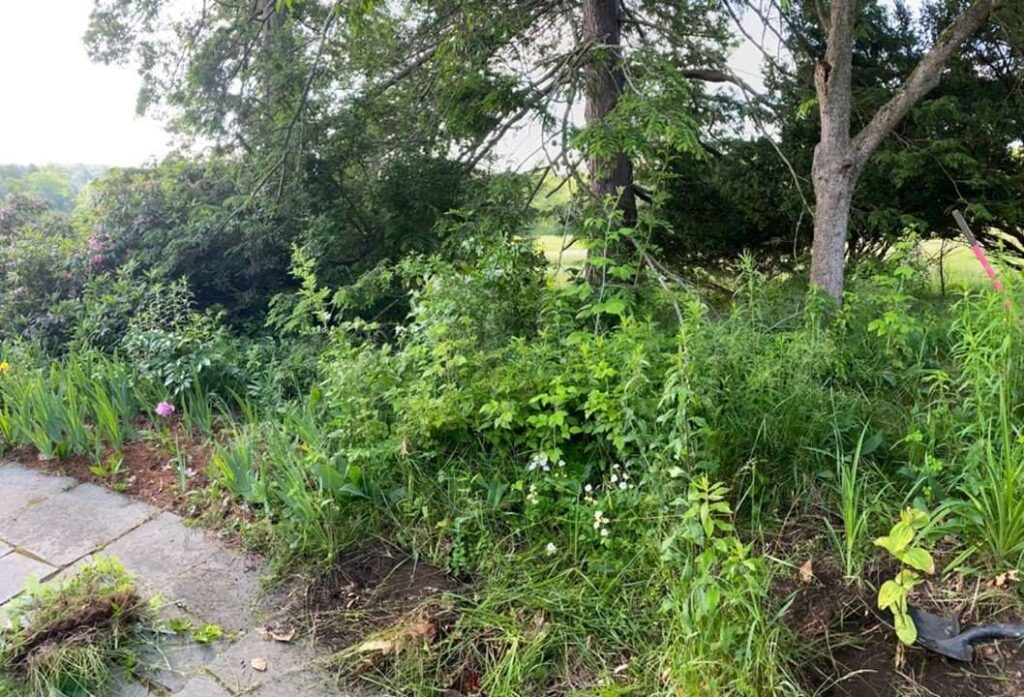
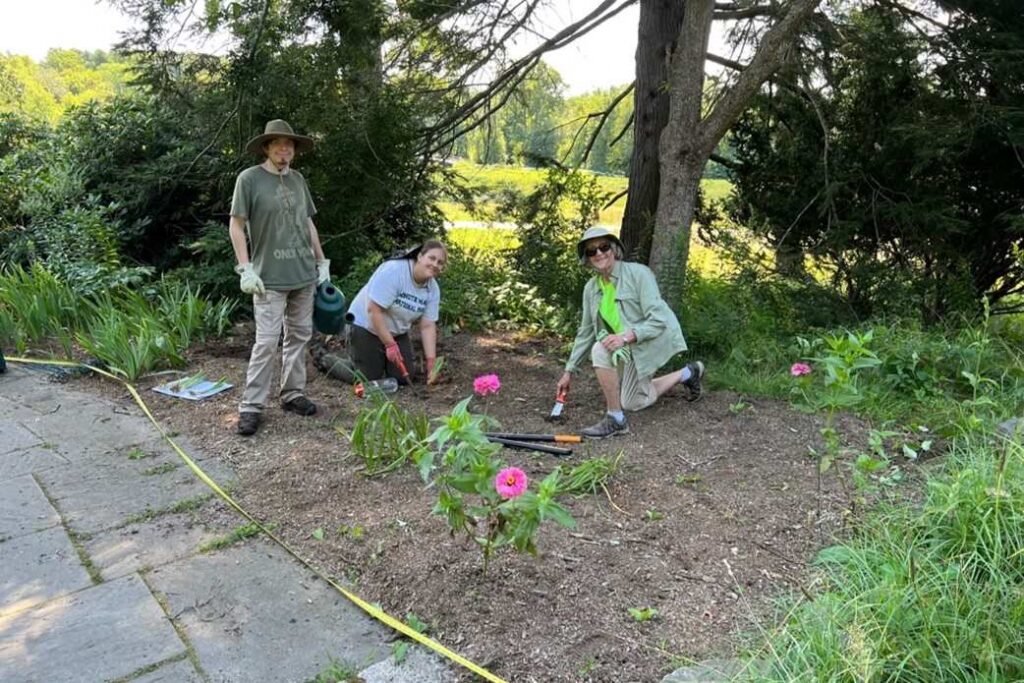
Figure 6 and 7. Abandoned bed in the West Slope garden near the former greenhouse site before and after weeding and transplanting divided iris.